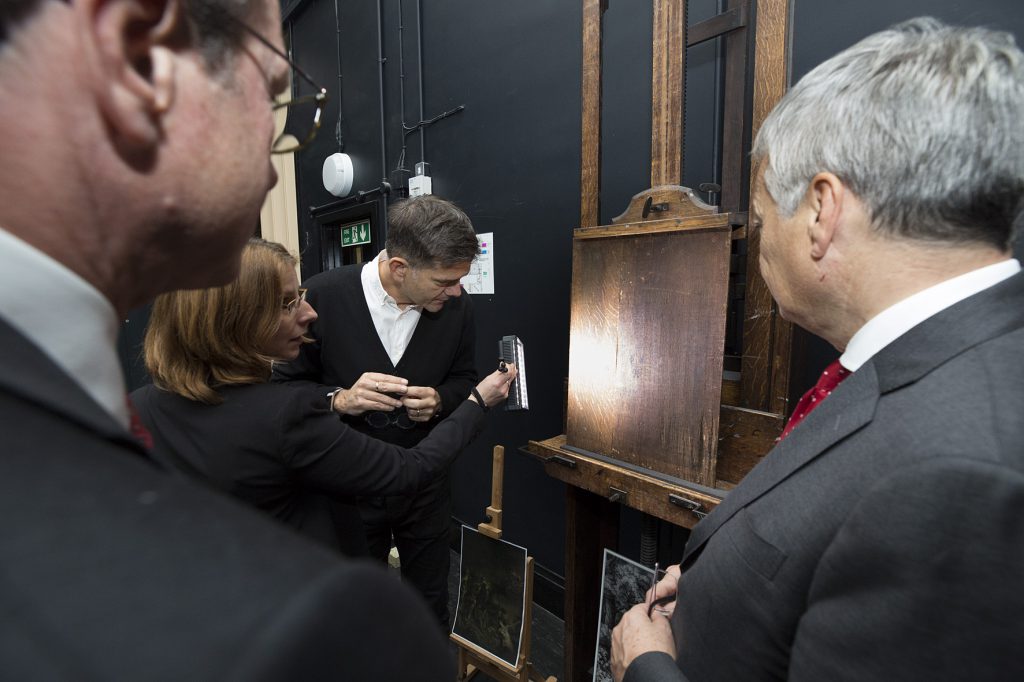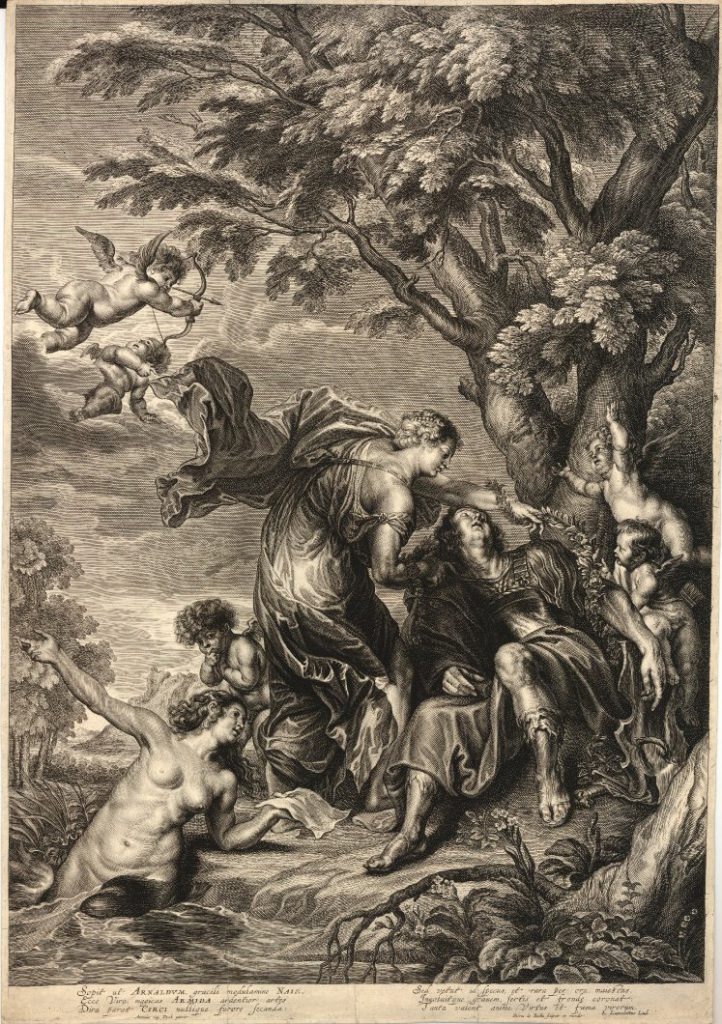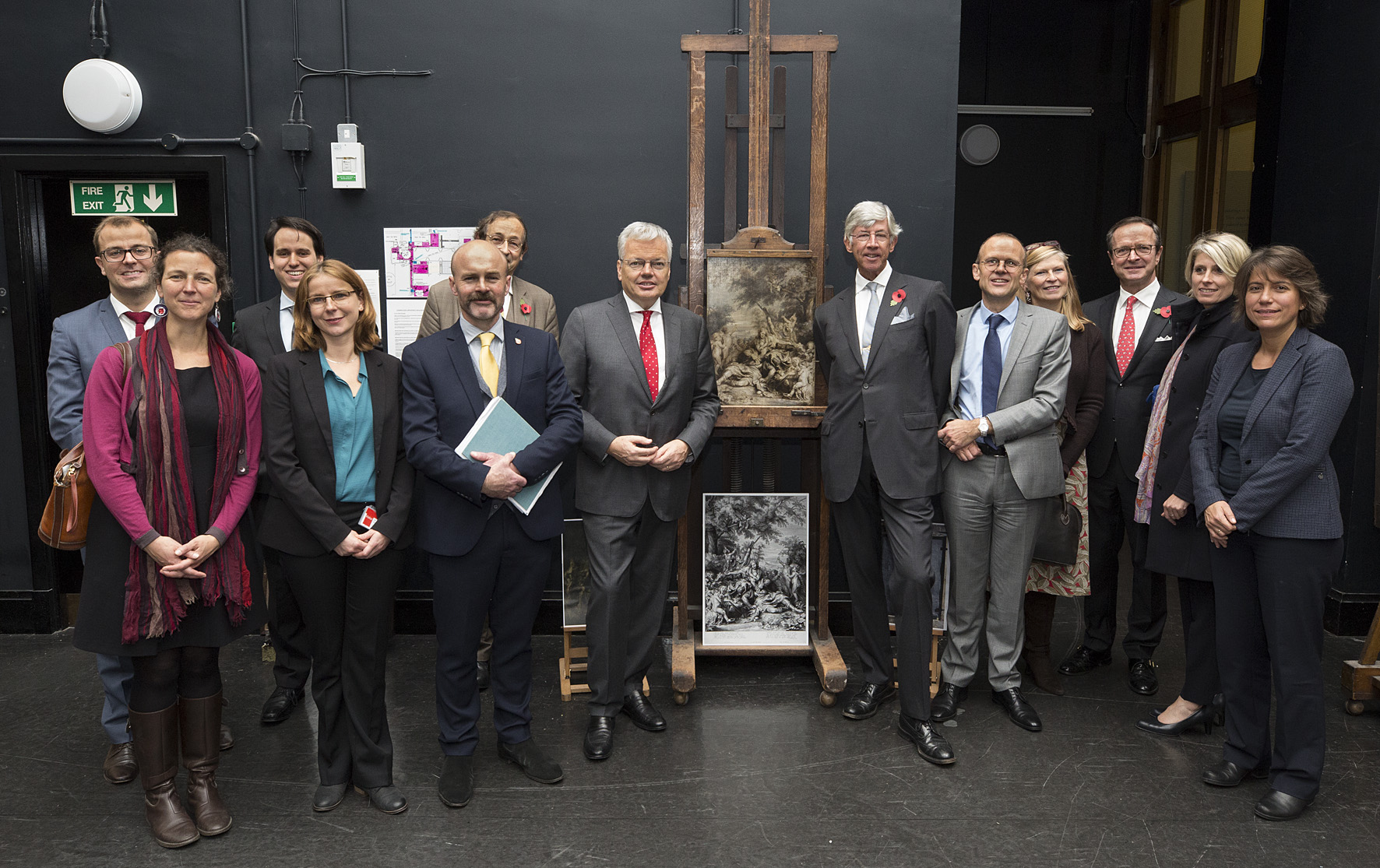21 December 2018
JVDPPP demonstrates the project at the National Gallery, London
On 6 November in London, JVDPPP had the opportunity to show the project at work to the Belgian Deputy Prime Minister and Foreign Minister, Didier Reynders, accompanied by the Belgian Ambassador, Rudolf Huyghelen, and representatives of JVDPPP’s sponsors, Fonds Baillet Latour, Secretary General Alain de Waele and Curator Guy van Wassenhove. JVDPPP Project Leader, Dr. Joost Vander Auwera, and lead dendrochronologist, Dr. Andrea Seim, accompanied by Webmaster Dennis Driessen, were conducting an examination of Anthony Van Dyck’s Rinaldo conquered by Love for Armida at the National Gallery, in collaboration with Dr. Bart Cornelis, Curator of Dutch and Flemish Paintings, and Chief Conservator Larry Keith.
Joost gave an introduction to the project; its aims, scope and methodology. Rinaldo conquered by Love for Armida was an excellent example for demonstrating the project’s approach to Van Dyck’s panels.
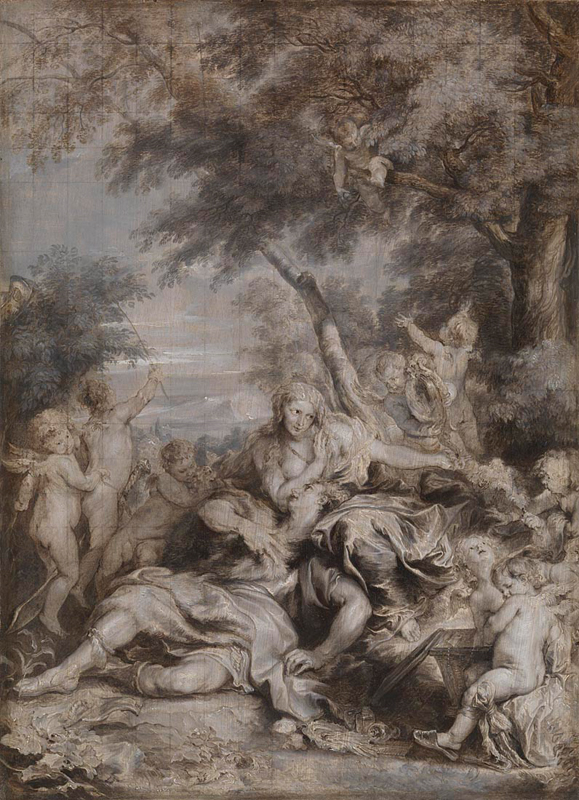
Anthony Van Dyck, Rinaldo conquered by Love for Armida
1634-5, oil on wood, 57 x 41.5 cm
National Gallery, London, inv. no. NG877.2
The front was examined first. The scored lines, used as an aide by the engraver (the engraving by Pieter de Jode II was published by Jan Caspeels in 1646 after Van Dyck’s death) were noted. Also, of course, Van Dyck’s masterly brush strokes and mastery of grisaille painting, which technique was most abundant during his second Antwerp period 1627-32 and his stay on the continent 1634-5. The National Gallery panel appears to have served both as a modello for the painting in the Musée du Louvre (inv. no. 1235) and for the engraving. This was probably Van Dyck’s intention.
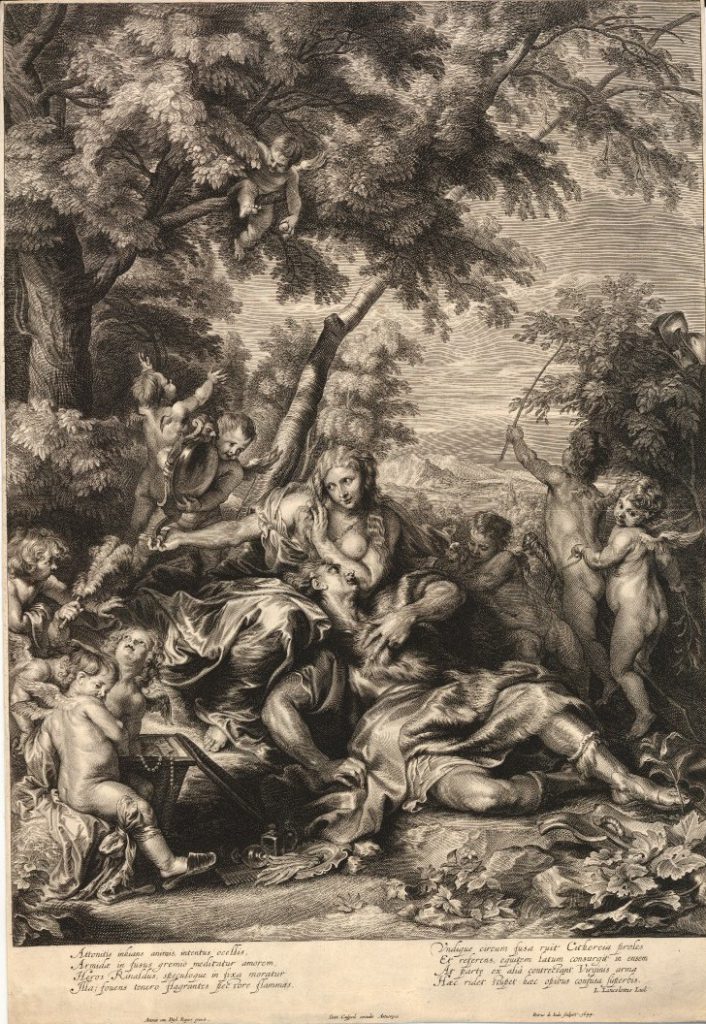
‘Rinaldo and Armida’, engraving by Pieter de Jode I, 605 x 422 mm, British Museum, London, inv. no. R, 2.5.2
The painting was turned around and the reverse revealed the panel maker’s mark of Michiel Vriendt and the Antwerp brand of the Guild of St. Luke. Vriendt was a master in the Guild by 1615, a signatory to the 1617 panel makers’ petition and died in 1638. So far, his is the only panel maker’s mark we have found on Van Dyck’s panel paintings from his second Antwerp period and 1634-5 visit. For a biography of Michiel Vriendt, click here.
Andrea explained the process of dendrochronology; the photographing of the annual rings of the tree’s growth, their subsequent measurement and comparison to reference chronologies of known dates and other panels that JVDPPP have examined so far. Comparative analysis is always important and, in this case, there is also another version of a Rinaldo and Armida in grisaille in the collection of the Royal Museums of Fine Arts of Belgium.
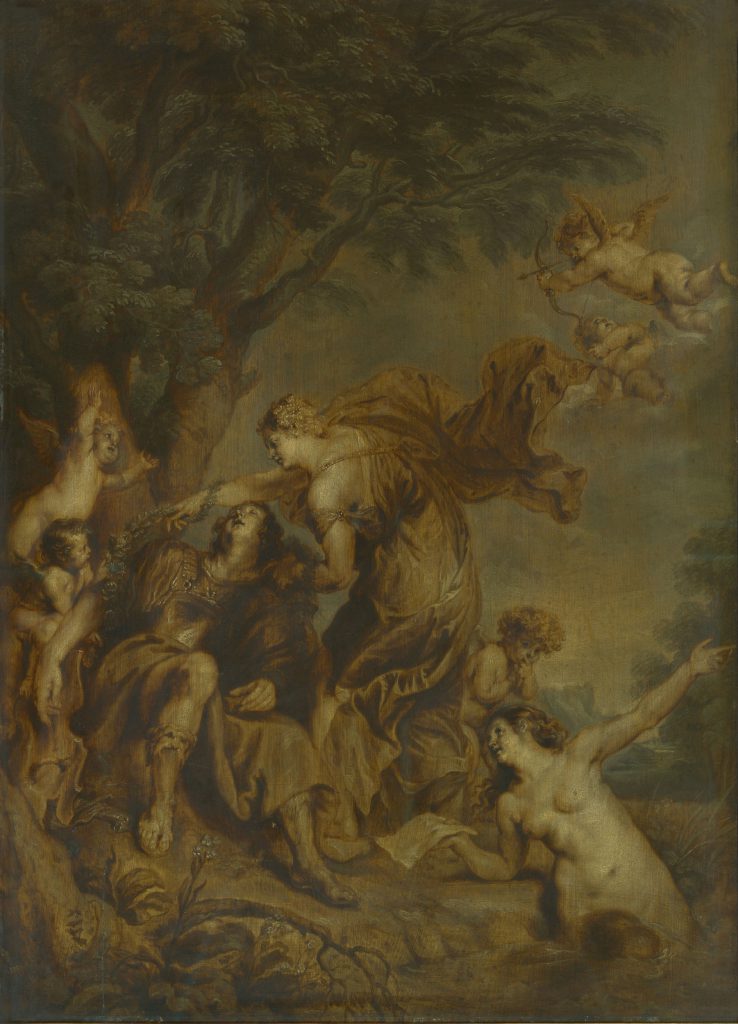
‘Rinaldo and Armida’, oil on panel, 56.5 x 41.5 cm, Royal Museums of Fine Arts of Belgium, inv. no. 3781
The grisaille relates to the Rinaldo and Armida in the Museum of Fine Arts, Baltimore (inv. no. 1951.103) and an undated engraving made by Peter de Bailliu. This panel exhibits a Guild but not a panel maker’s mark. It was made after Van Dyck’s death in 1641 for the engraving, the tree being felled only after 1644. The differences between the styles of two Rinaldo and Armida panels are insightful.
We are very grateful to the Deputy Director of the National Gallery, Dr. Susan Fortier, for hosting the visit.
Justin Davies
How to cite: Davies, Justin. “JVDPPP demonstrates the project at the National Gallery, London” In Jordaens Van Dyck Panel Paintings Project.
jordaensvandyck.org/jvdppp-demonstrates-project-london/ (accessed 20 December 2025)


